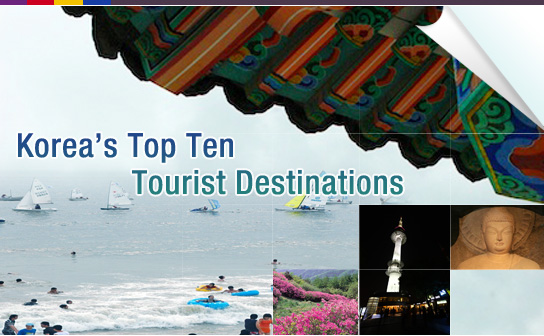 |
 |
| To celebrate the completion of its new website, the Korea
Tourism Organization has come up with an list of heralded travel destinations
exclusively for visitors. Due in large part to Korea’s beautiful, rolling
mountains, surrounding oceans and myriad cultural & historical sites, the
flow of tourists to the country is steadily growing. If you do not want to miss
out on any must-see places or must-do activities, be sure to include Korea’s top
10 tourist destinations in your itinerary. |
 |
|
|
No.1
|
Traditional Market Tour (Namdaemun Market, Dongdaemun
Market, Myeong-dong and
Insa-dong) |
|
|
|
As a time-honored traditional haven, Namdaemun Market makes for an ideal
place to soak in the shopping scene with its unlimited street-vendors, and
myriad restaurants. If it’s the latest fashion trends you’re after, Dongdaemun
Market never sleeps, greeting shoppers from 10am to as late as 5am the following
morning. The area is bustling with energetic Koreans even at dawn. Myeong-dong,
which was rated the number-one destination visited by foreign tourists, is
crowded with people all year round.
It has a longstanding reputation for
attracting the young and fashionable aficionados. The cozy, narrow streets of
Insa-dong are lined with antique shops selling old-fashioned books, paintings
and ceramics. The many elusive alleyways boast a variety of teahouses serving
traditional teas and eateries selling bindaeddeok (Korean-style pancakes)
and makgeolli (rice wine). |
|
 |
|
|
 |
| |
No.2
|
Gyeongju Bulguksa Temple and Seokguram Grotto
Tour |
|
|
|
Regarded as a “roofless museum,” Gyeongju has numerous relics and remains
dating all the way back to the Silla Kingdom (BC 57–AD 935).
In particular,
Bulguksa Temple and Seokguram Grotto, which have both been designated World
Cultural Heritage Sites by UNESCO, are must-see destinations.
Dabotap and
Seokgatap, granite pagodas engraved with bamboo and lotus flower patterns, are
popular spots for photo opportunities. Seokguram Grotto is a dome-shaped stone
cave made from some 360 granite plates. The marveling construction of Seokguram
Grotto, built with unprecedented precision, features a gem on the forehead of
the beautiful and magnificent Buddha statue and is an incredible sight to behold
at sunrise. |
|
|
|
| |
|
|
|
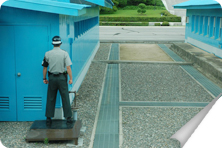 |
The DMZ is a place where you can see the truce line that separates Korea into
south and north, making it the only divided country in the world. As public
access to the DMZ is strictly restricted and the area is guarded by both South
and North Korean soldiers, the DMZ remains a virtually undisturbed zone.
Therefore, rare plants and animals are often spotted there. You can also see
stern guards defending their respective territories at the Panmunjeom security
posts. You may even get a glimpse of North Korean residents through a telescope
at any number of observatories. |
|
|
|
| |
No.4
|
Busan’s Haeundae Beach and Jagalchi Market
Tour |
|
|
|
| Busan, a beautiful port city on the Korean Peninsula surrounded on three
sides by ocean, features perfect harmony between vast sandy beaches and
coastline. Haeundae Beach is considered a landmark in Busan as it is frequented
by international and Korean tourists alike, particularly during the summer
vacation season. Jagalchi Market, located near Haeundae, is Korea’s largest fish
market. It sells a variety of fish caught off of Haeundae’s coast. Jagalchi
offers the delight of sampling fresh sushi as merchants prepare it on the
spot. |
|
|
|
| |
No.5
|
Jeju UNESCO Natural Heritage
Tour |
|
|
|
Jeju Island, Korea’s southernmost island, was formed as a direct result of
volcanic activity. Its natural beauty is globally recognized as it was
designated a World Natural Heritage Site by UNESCO in June 2007.
The Jeju
tour offers a number of places to appreciate the mystery and beauty of nature.
There is a legend about Baekrokdam Lake at Hallasan Mountain where wizards are
said to have frolicked here. And though the Geomun Oreum lava caves were created
a long time ago, their inner structures are well preserved and lava pillars show
traces of where lava onced flowed. Seongsan Ilchulbong Peak (Sunrise Peak) is a
perfect spot to watch the magnificent view of the sun rising over the sea cliffs
at dawn. |
|
|
|
| |
No.6
|
Tradition Experience Tour (Andong Hahoe Village &
Korea Folk Village) |
|
|
|
Are you interested in the lifestyle of ancient Koreans? If so, be sure to
check out both Andong Hahoe Village and Korea Folk Village. You can learn about
the old homes, traditional games and folk culture of Korean ancestors all in one
place.
The ancient houses at Hahoe Village are traditional Korean-style
houses that are thousands of years old. More surprisingly, they are still
inhabited by people today. There is a program that gives tourists a chance to
spend a night in one of the houses. The Hohoe Byeolsingut Exorcism, which has
been designated an important intangible cultural asset, is staged at 3 p.m.
every Saturday and Sunday from March through November. Admission is
free. |
|
|
|
| |
No.7
|
Korea Buddhist Temple Tour (Haeinsa Temple, Tongdosa
Temple, Songgwangsa Temple, Haedong Yonggungsa
Temple) |
|
|
|
Korea’s Buddhist temples are located deep within mountains, and are in
perfect harmony with the surrounding nature. Haeinsa Temple, located at Gaya
Mountain, is one of three major Buddhist temples in Korea. is home to Tripitaka
Koreana, a national treasure created to protect the country from foreign
invasion.
Tongdosa Temple is famous for not having any Buddhist statues
in the temple. However, you must stop by its main building, which have sarira
(marble-shaped relics retrieved after cremating Buddha) enshrined in the place
of a Buddha statue. Nicknamed “a prison in heaven,”
Songgwangsa Temple
means “a rest area for clouds and winds.” It is an ideal spot to relax body and
mind. Haedong Yonggungsa Temple is a temple frequented by tourists visiting
Busan. It features picturesque scenery as it towers over the ocean. It offers
many other attractions, including a dragon-shaped stone sculpture, Korea’s
largest Buddha statue, and a wishing rock. |
|
|
|
| |
No.8
|
Famous Mountain Tour (Seoraksan Mountain, Jirisan
Mountain, Geumgangsan
Mountain) |
|
|
|
A mountain climber was once asked, “Why do you climb a mountain?” and he
answered, “Because there is a mountain.” Korea is a perfect place for such an
enthusiast as the majority of its landscape is covered with mountains. In
addition to a sense of accomplishment upon conquering their peaks, Seoraksan
Mountain, Jirisan Mountain and Geumgangsan Mountain offer the pleasure of a
beautiful nature experience.
Seoraksan Mountain has a number of peaks
and valleys, including Korea’s third-highest peak, Hangyeryeong. Designated a
UNESCO Biosphere Reserve, it is home to diverse species of plants and animals.
The origins of the name of Jirisan Mountain, Korea’s first national
park, lead to a popular belief that the mountain has the power to turn a foolish
person wise. Though it is famous for its steep and towering peaks, it is also
good for family climbers as there are various paths on the mountain.
Geumgangsan Mountain, located in North Korea, commands a unique view in
each season, and so it has a different name for each season: Geumgangsan
Mountain, Bongraesan Mountain, Pungaksan Mountain and Gaegolsan Mountain. You
will need to sign up for a package tour to visit Geumgangsan Mountain. Among
four different courses, all of which feature the seasonal beauty of Geumgangsan
Mountain, Guryongyeon Falls is not to be missed. |
|
|
|
| |
No.9
|
Ancient Palace Tour (Gyeongbokgung Palace,
Changdeokgung Palace, Deoksugung
Palace) |
|
|
|
Built during the Joseon dynasty (1392–1910), Gyeongbokgung Palace is
recognized as the finest among the five major palaces. As a main palace
representing the Joseon dynasty, it was a residence for royal families and a
place where official ceremonies and rituals were held. It is a famous
destination and a favorite among foreign tourists who visit Seoul.
Changdeokgung Palace is a secondary palace built after Gyeongbokgung.
Its original form is the best preserved of all the royal palaces of the Joseon
dynasty. Its rear garden with its harmony of nature and man-made structures is
known for its tremendous beauty. Untouched natural settings and pavilions create
a garden that is truly fit for a royal king.
Deoksugung is a royal
palace where King Gojong, the 26th king of the Joseon dynasty, lived until his
final days. Especially famous are Seokjojeon, which hosted foreign envoys, and
the stonewall path that has a superstitious belief associated with it that
lovers who walk along the wall together will break up. |
|
|
|
| |
No.10
|
Gangwon-do Ski
Tour |
|
|
|
Gangwon-do is a haven for Korean skiers as winter begins earliest here in
Korea and it is famous for heavy snowfalls throughout the winter. Skiers have a
wide selection as Gangwon-do’s ski resorts offer diverse slopes and various
facilities. Yongpyeong Resort, where international competitions have been held,
has 31 slopes available for skiers of all levels.
Daemyung Vivaldi Park is
ideal for young skiers who want to ski well into the night. Those who do not
want to ski can have fun at Ocean World, an indoor water park located
underground, beneath the resort. At Gangwon Land High 1 Ski Resort, you can
enjoy gambling as well as skiing. It is connected by Korea’s only ski train, and
the ride to the ski resort adds to the overall sense of
entertainment. |
|
|
|


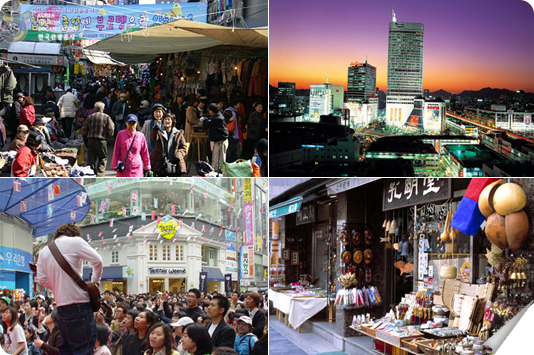
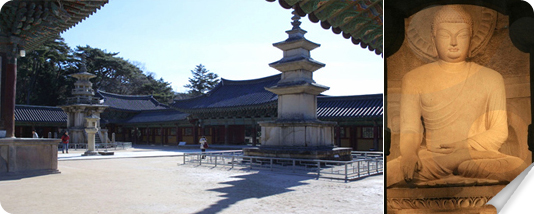


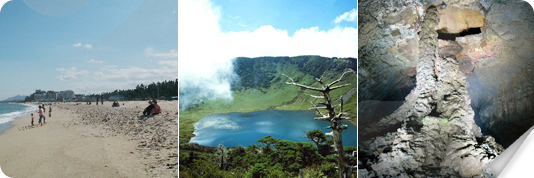
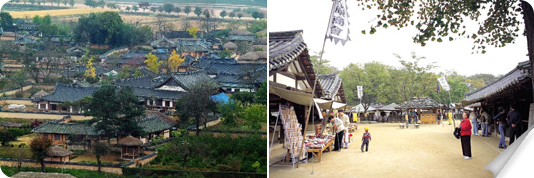
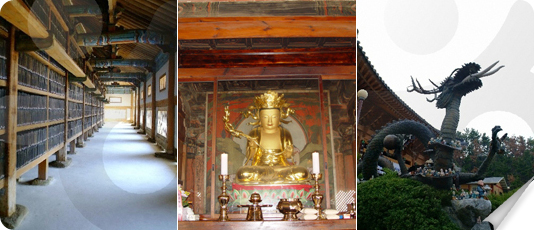
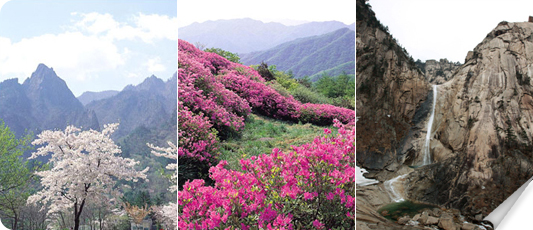
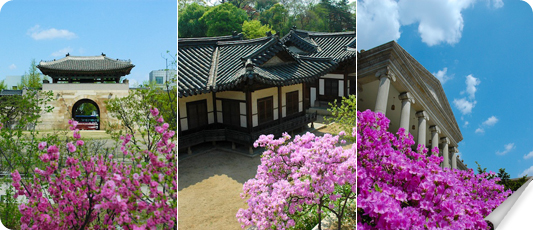

댓글 없음:
댓글 쓰기